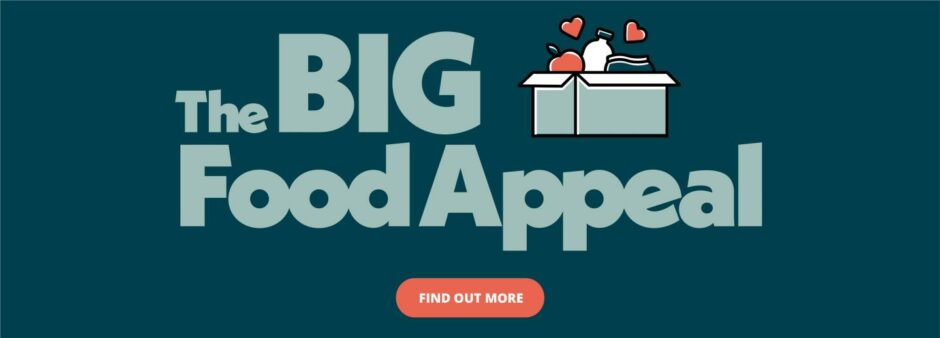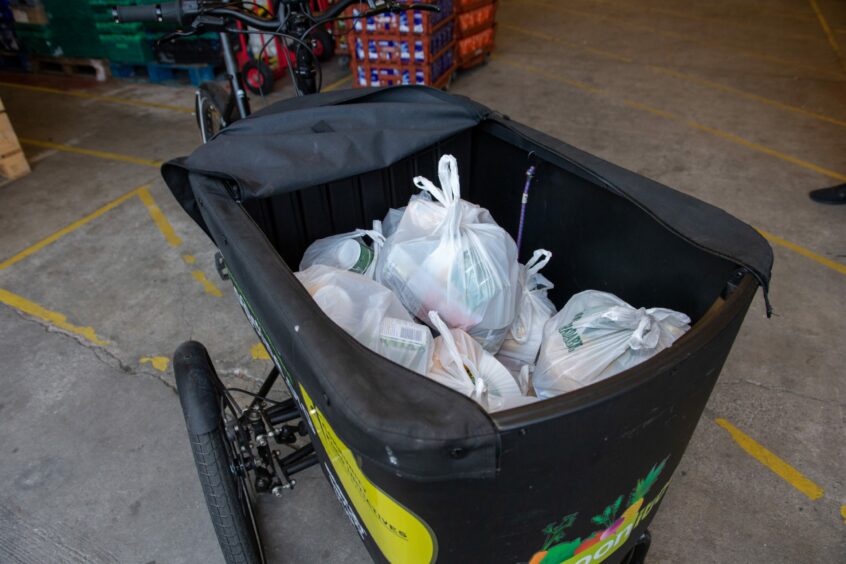As part of the Big Food Appeal, we want to make sure people know exactly how to get the help they need.
So what is a foodbank, and how do you access one?
Foodbanks provide people who cannot afford essential items with emergency food parcels.
These contain basic, everyday items that are needed to survive. This includes dried food like pasta and rice, tins of vegetables and fruit, and pasta sauces.
Most foodbanks provide a minimum of three days’ worth of nutritionally-balanced food in these emergency parcels, which are often tailored to the client’s needs.
Sanitary products and toiletries are sometimes included too.
Foodbanks are run by various groups including churches, charities and community organisations and rely on donations and grants.
Cfine also operates FareShare Grampian and Highlands and Islands, which involves surplus in-date food from supermarkets that would otherwise go to waste being redistributed to charities and organisations.
The number of people relying on foodbanks to survive has grown each year – which is why the Press and Journal, Evening Express and Original 106 have teamed up to tackle food poverty by raising awareness and appealing to our readers and listeners to do what they can to keep them stocked up.
How to access emergency food
Some foodbanks operate through a referral scheme, meaning that anyone who needs access to emergency food must be referred by a service.
The Trussell Trust, which runs foodbanks across the country, operates using a referral process. The voucher can be exchanged at a Trussell Trust foodbank for a minimum of three days’ worth of emergency food.
Frontline professionals like doctors, health visitors and social workers can provide vouchers that allow people to access foodbanks.
Citizens Advice Scotland can also provide people with the food vouchers. They will also set up an appointment to discuss income and needs.
The advisor will make sure that the client is claiming the correct benefits and can give advice about budgeting and debts.
Between April 1 and August 31 more than 3,000 clients received advice in relation to foodbanks from Citizens Advice Scotland.
However, some foodbanks do not require a referral for emergency food.
Cfine operate a call and collect point from their base in Aberdeen and Instant Neighbour can provide individuals with a food parcel once every two weeks without a referral.
Additionally, some foodbanks can deliver food to those who are isolating due to Covid, or to those who live rurally and cannot travel.
It is best to call local foodbanks or check their websites to find out if they operate using a referral system or not.
What are community food pantries?
Some foodbanks operate more like a pantry – allowing users to pop in and pick a number of items for a set cost.
Pantries give members a shopping experience, where they can choose the items they need.
Cfine’s Community Pantry operates using a membership basis which costs £3 a year.
Members can then visit one of Cfine’s pantries once a week and can choose 10 items for £2.50 and allows users to choose 10 items.
The items include fish, meat, fresh fruit and vegetables, household items, pulses and other goods. The estimated value of the items in a weekly shop is around £15.


